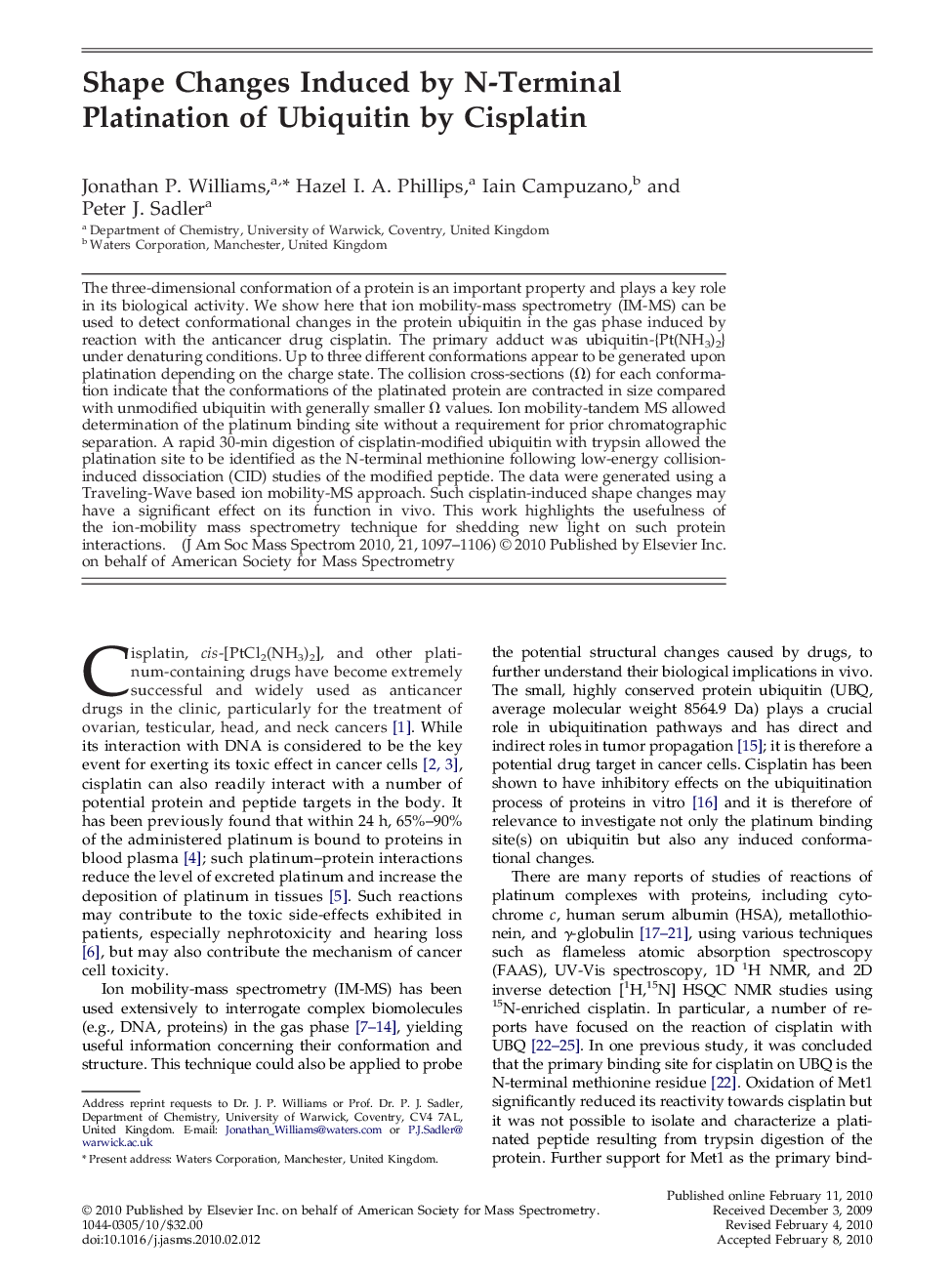| Article ID | Journal | Published Year | Pages | File Type |
|---|---|---|---|---|
| 1195383 | Journal of the American Society for Mass Spectrometry | 2010 | 10 Pages |
The three-dimensional conformation of a protein is an important property and plays a key role in its biological activity. We show here that ion mobility-mass spectrometry (IM-MS) can be used to detect conformational changes in the protein ubiquitin in the gas phase induced by reaction with the anticancer drug cisplatin. The primary adduct was ubiquitin-{Pt(NH3)2} under denaturing conditions. Up to three different conformations appear to be generated upon platination depending on the charge state. The collision cross-sections (Ω) for each conformation indicate that the conformations of the platinated protein are contracted in size compared with unmodified ubiquitin with generally smaller Ω values. Ion mobility-tandem MS allowed determination of the platinum binding site without a requirement for prior chromatographic separation. A rapid 30-min digestion of cisplatin-modified ubiquitin with trypsin allowed the platination site to be identified as the N-terminal methionine following low-energy collision-induced dissociation (CID) studies of the modified peptide. The data were generated using a Traveling-Wave based ion mobility-MS approach. Such cisplatin-induced shape changes may have a significant effect on its function in vivo. This work highlights the usefulness of the ion-mobility mass spectrometry technique for shedding new light on such protein interactions.
Graphical AbstractIon mobility-MS studies show that platination of the N-terminal methionine of ubiquitin with the anticancer drug cisplatin causes protein conformational changes.Figure optionsDownload full-size imageDownload high-quality image (148 K)Download as PowerPoint slide
